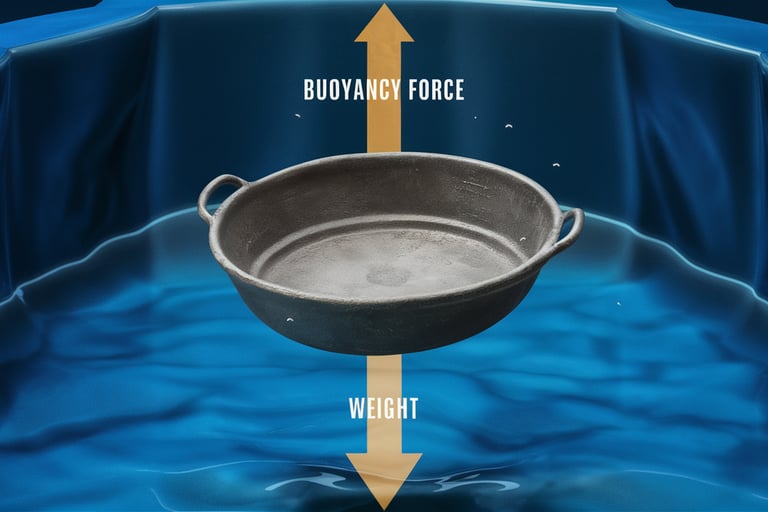Archimedes’ Principle & Buoyancy Force: Why Denser Bodies Sink in Fluids and Vice Versa? (MLA Format Paper)
Eureka! Eureka! Over 2000 years after its discovery, the Archimedes’ Principle continues to fascinate. Join us in this exciting voyage for exploring the theory and practicalities of this timeless concept, the one Archimedes famously used to expose the goldsmith’s fraud.
FLUID MECHANICSFLUID DYNAMICSCIVIL ENGINEERINGMARINE ENGINEERINGMECHANICAL ENGINEERING
Indrajeet Yadav
10/15/20187 min read
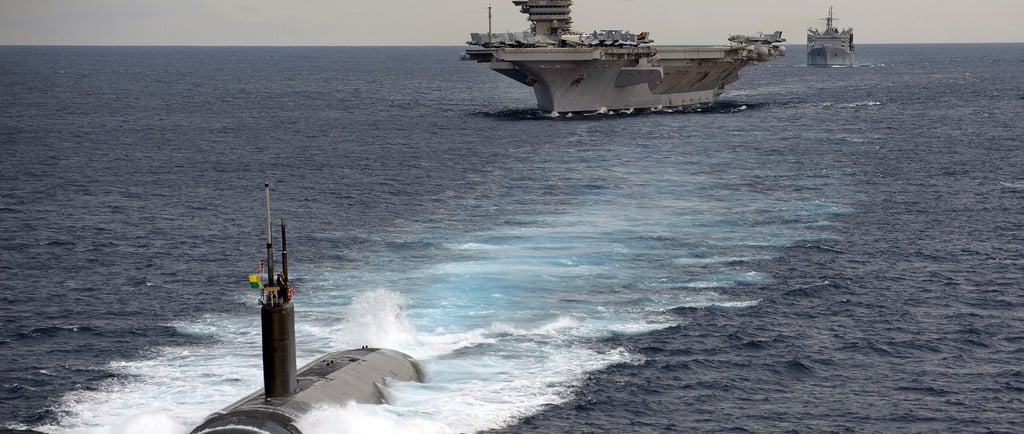

Name
Institution
Date
Archimedes’ Principle & Buoyancy Force: Why Denser Bodies Sink in Fluids and Vice Versa?
Abstract
Wood floats in water, but steel sinks. Why then do ships made from steel hulls not sink? Moreover, submarines can float and sink at will. Such phenomena are explained scientifically by one simple property i.e. density. Objects sink if their average density is greater than that of the fluid, while those with lesser overall density float. The engineering concept which elaborates what sinks and what floats is the famed Archimedes’ Principle. So fundamental is the notion to physics and fluid mechanics, it continues to command the attention of researchers across the world over two thousand years after it was discovered (Mohazzabi 836) by the illustrious Archimedes of Syracuse. The present experiment used four separate objects, including an empty tin can, of different shapes and materials to check the influence of density on their floating behavior. Results indicated that objects less dense than water float, while those denser than water sink. When floating objects were forcefully submerged in water, an upward force was felt. Finally, while the empty tin can floated, it sunk when filled with water.
Introduction
Primarily, the present experiment verified if bodies with density lower than that of water float while those with greater density sink by investigating the buoyancy force, which objects experience when immersed in fluids. Four objects of distinct materials and shapes were placed individually in water inside a vessel with a beak after calculating their average densities. Floating bodies were further immersed in water to check if they sunk. Thereafter, the empty tin can was filled with water and placed in the beaker to examine if it floats.
Theory
According to the Archimedes’ Principle, any object partially or wholly immersed in a fluid displaces a volume of fluid equal to the volume of its submerged part (Kires 484); and the object experiences an upward force equal to the weight of the displaced fluid (Keighley et al. 67).
Fluids exert a hydrostatic pressure on all surfaces they contact. Hydrostatic pressure is given by (eCourses):
PH = ρF g h (1)
Where:
ρF is the fluid density;
g is gravity; and
h is the depth of the surface.
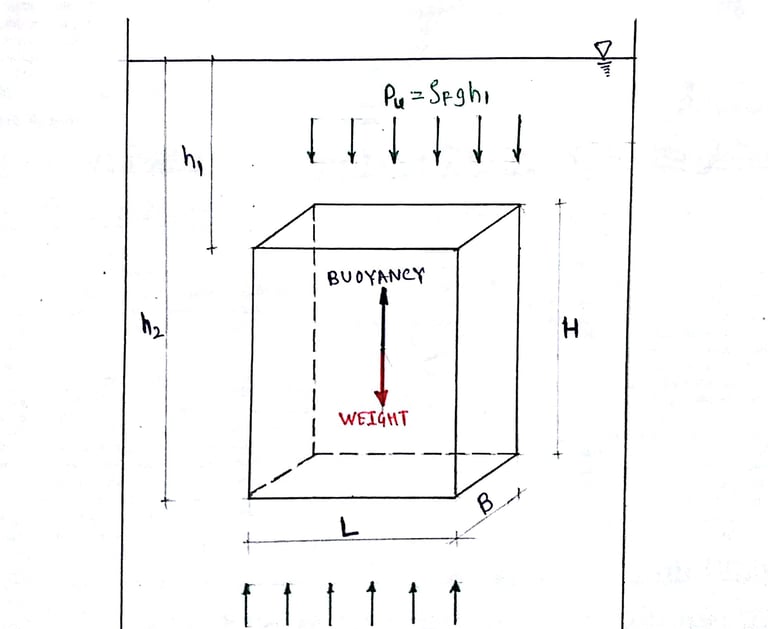

Figure 1. Forces and pressures acting on an immersed body
Consider figure 1 for an object immersed in water inside a beaker. Upward hydrostatic pressure acting on the object’s lower surface is:
PL = ρF g h2 (2)
Similarly, downward hydrostatic force acting on the object’s upper surface will be:
PU = ρF g h1 (3)
Horizontal hydrostatic pressures acting on all vertical sides balance out. Therefore, the net upward hydrostatic pressure is:
PNET = ρF g (h2 – h1) (4)
Now, (h2 – h1) = H. PU and PL act on the same area viz. L * B. Therefore, the net upward hydrostatic force will be:
FNET = ρF g H L B (5)
But, H L B = V = volume of the object, which is also the volume of the displaced fluid. Therefore:
FNET = ρF g V (6)
Right hand side of equation 6 is the weight of the displaced fluid, which equals the net upward force i.e. the force of buoyancy. Buoyancy (BF) is:
BF = ρF g V (7)
For a body to float, its weight (W) has to be equal to or less than the buoyant force. Mathematically:
W = BF
ρS g V = ρF g V; or
ρS = ρF (8)
Where, ρS is the density of the solid i.e. object. From equation (8), we define three floating conditions. Objects with density:
1. equal to the fluid’s, float with their upper surface along the fluid surface;
2. less than the fluid’s, float with their upper surface above the fluid surface; and
3. greater than the fluid’s, sink (BC Campus).
For condition 2, we have:
ρS g V = ρF g V’
Where V’ is the submerged volume; V’ < V. Solving for V’:
V" = V ρS / ρF (9)
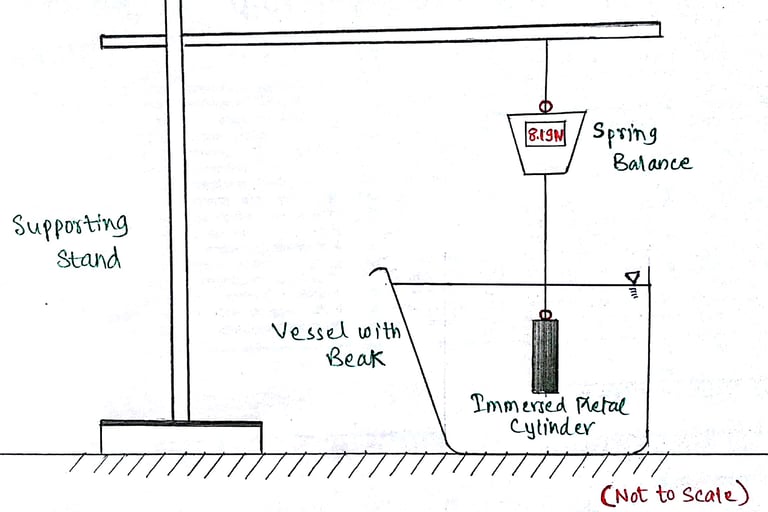

Figure 2. Experiment setup
Procedure
With reference to figure 2., the experimental procedure involves:
Measure the mass of the four objects. Calculate their weight in air. Take g = 10 m/s2.
Measure the dimensions of wood block and mild steel cylinder. Compute their volumes.
Immerse the brass key in a known quantity of water inside the measuring flask and determine the volume difference, which is the volume of the key.
Repeat step 3 for the sinker. Attach sinker to tin can repeat step 3 to evaluate the tin can’s volume.
Calculate the densities of the four objects.
Separately attach the three objects (except the tin can) to the spring balance and place them in the vessel with the beak and measure their weight, which is their experimental (measured) apparent weight.
Attach the tin can to the spring balance and place it inside the vessel which is completely filled with water. Collect the overflowing water in the measuring flask and calculate its weight.
Compute the theoretical (calculated) apparent weight of all objects by subtracting buoyancy force from their respective weights in air.
Push the floating bodies deeper in water and record if you feel any upward force.
Fill the tin can with water and note if it sinks.
Results
Table 1. Experiment data
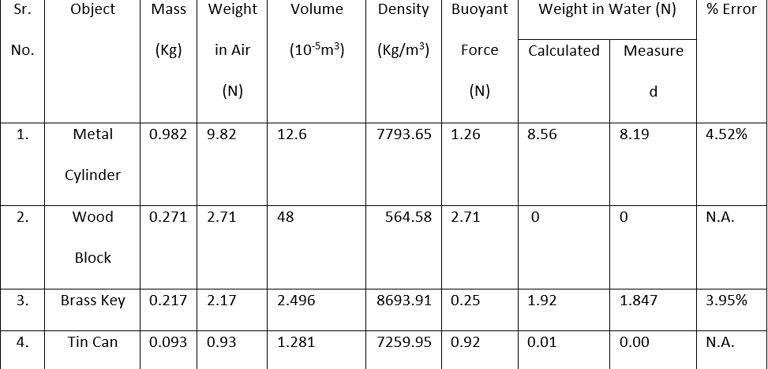

Calculations
1. Mild Steel Cylinder.
Height = 10cm, Radius = 2cm
i. Volume = πr2h = 3.142* 2*2*10 = 125.663cm3 = 0.000126m3
ii. Density = = 7793.65 kg/m3
iii. Buoyancy Force FB = V ρF g = 0.000126*1000*10 = 1.26N
iv. Calculated Apparent Weight = Weight in Air – Buoyancy Force = 9.82 – 1.26 = 8.56N
v. % Error in Apparent Weight =
2. Wood Block.
i. Volume V = LBH = 10*6*8 = 480cm3 = 0.00048m3
ii. Density = = 564.58 kg/m3
iii. Sumberged Volume = = 0.000271m3
iv. Buoyancy Force FB = V’ ρF g = 0.000271*1000*10 = 2.71N
v. Calculated Apparent Weight = Weight in Air – Buoyancy Force = 2.71 – 2.71 = 0
3. Tin Can.
i. Volume V = 12cm3 = 0.000012m3
ii. Density = = 7750.00 kg/m3
iii. Submerged Volume V’ = 92cm3
iv. Buoyancy Force FB = V’ ρF g = 0.000092*1000*10 = 0.92N
v. Calculated Apparent Weight = Weight in Air – Buoyancy Force = 0.93 – 0.92 = 0.01N
Discussion Questions
Q.1. Why is step 7 in Procedure necessary for the tin can? Why its buoyancy force cannot be calculated similar the wood block’s?
A.1. Although tin is denser than water, the empty tin can becomes less dense than water because of the air that fills it. Unlike the wood block, the empty tin can (tin + air) is not made from single material, making it tough to directly compute its average density that is necessary to determine its submerged volume, which, in turn, helps calculate buoyancy force.
Q.2. Why does the tin can float when empty but sink when filled with water? Explain its analogy with ships and submarines.
A.2. With air occupying the space inside the tin can, its average density is less that of water and it floats. However, when filled with water, its overall density rises above that of water. Similarly, average densities of ships are less than water’s because of the empty spaces in their structure. Breached hulls allow water in, which escalates their average density and sinks them. Submarines take water into their ballast tanks to dive underwater and force it out to rise (Brian and Freudenrich 1). To maintain stability, unloaded ships take water into their ballast tanks and release it when loaded.
Q.3. When you force the floating bodies further inside water, do you feel experience upward force? If yes, why?
A.3. Yes. Forcing floating bodies further inside water increases their immersed volume. With more water displaced, the buoyancy force also rises and, therefore, we feel the net upward force.
Q.4. Is there any relation between buoyancy force and Newton’s Third Law? Explain?
A.4. Yes. A body immersed in a fluid exerts force on the fluid. The fluid, therefore, exerts a reaction force in the form of the buoyant force (Mohazzabi 838).
Q.5. Will 1 kg of iron and aluminum experience the same buoyant force in water? Will 100 cm3 of iron and aluminum feel the same buoyancy force?
A.5. Iron is denser than aluminum. Therefore, 1 kg of aluminum will occupy larger volume than the same mass of iron. Aluminum will displace more water and, therefore, feel more buoyant force. However, 100 cm3 of iron and aluminum will feel the same buoyant force since they displace the same volume of water.
Conclusion
The objective of the experiment was to check if objects with density lower than of the fluid they are immersed in float and vice versa by examining the upward buoyant force. Results proved that bodies denser than water sunk while those less dense than water floated. Equipment errors and discrepancies in noting the readings introduced differences in experimental (measured) and theoretical (calculated) values of apparent weight. The percentage error for both floating objects is not applicable (N.A.) because the denominator is zero.
Works Cited
BC Campus. “Archimedes’ Principle.” https://opentextbc.ca/physicstestbook2/chapter/archimedes-principle/. Accessed 5 Oct. 2018.
Brian, Marshall, and Craig Freudenrich. “How Submarines Work.” How Stuff Works, 17 Aug. 2000, https://science.howstuffworks.com/transport/engines-equipment/submarine.htm. Accessed 5 Oct. 2018.
eCourses. “Fluid Mechanics – Theory.” https://www.ecourses.ou.edu/cgi-bin/eBook.cgi?doc=&topic=fl&chap_sec=02.3&page=theory. Accessed 5 Oct. 2018.
Keighley, H.J.P., F.R. McKim, A. Clark, and M.J. Harrison. “Archimedes’ Principle and Floatation.” Mastering Physics, Macmillan Master Series, 1984, pp. 67-80. Springer Link, https://link.springer.com/chapter/10.1007/978-1-349-07381-8_8.
Kires, Marian. “Archimedes’ Principle in Action.” Physics Education, vol. 42, no. 5, 2007, pp. 484-87. Research Gate, https://www.researchgate.net/publication/243676727_Archimedes'_principle_in_action.
Mohazzabi, Pirooz. “Archimedes’ Principle Revisited.” Journal of Applied Mathematics and Physics, vol. 5, 2017, pp. 836-43. Scientific Research Publishing, https://doi.org/10.4236/jamp.2017.54073.
You have machines these days to check gold's purity. Don't need Archimedes' Principle for that. What you need the principle for is a purer understanding of Fluid Mechanics. For that, write to us at indrajeety1981@gmail.com. Or call us directly at +91-9822052945. Regardless of your "density," we will help you float!
#ArchimedesPrinciple #Buoyancy #Physics #ScienceExplained #STEM #FluidDynamics #Educational #ScienceStudents #Learning #PhysicsInAction
